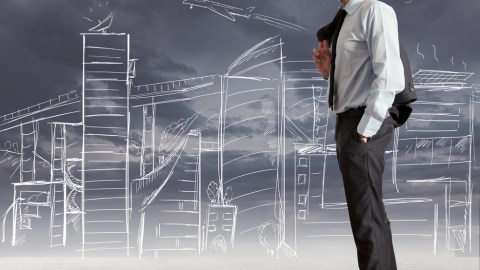Why 3D-Printed Houses Matter

The race to build the world’s first 3D-printed house is on. Italian civil engineer Enrico Dini (the subject of an upcoming documentary called “The Man Who Prints Houses”) has plans to print future houses from the world’s largest 3D printer, known as the D-Shape. In addition to plans to build the Möbius strip-shaped Landscape House, there are also plans afoot to 3D-print a classic “Canal House” in Amsterdam and a radical, futuristic “Protohouse” made out of super-fibrous materials. And that doesn’t even include the relatively mundane plans to 3D-print doors, windows, roofs and just about anything else a decent-size 3D-printer might be expected to extrude out these days.
Beyond being a showcase for 3D Printing – the latest and greatest exponential technology – why does printing a 3D-printed house matter?
For one, a 3D-printed house would be a proof of concept of the radical new topologies made possible by 3D printing. After all, printing a 3D house is not like printing a regular house – you don’t print all the bricks, stack them up one-by-one and put a roof on the top at the end. Instead, the 3D-printed house comes out magically, printed all together out of a piece of seamless material. You then can add steel and glass to the exterior as needed. This design process permits shapes that once were the exclusive province of our imaginations – like the Möbius Strip. With a single technological stroke, we have challenged the relationship between form and function and created the basis for upsetting every traditional convention of architecture.
That’s the logic that’s missing in standard critiques of the 3D-printed house. Earlier this week, for example, Lauren Hockenson of GigaOm wrote about a study suggesting that building a 3D printed house with today’s technology — a state-of-the-art MakerBot Replicator 2 -– would take 220 years, 4 months and 11 days. That’s assuming a quaint two-story, 2,500-square foot house and not a McMansion or something architecturally striking. But that logic was based on a faulty premise – that the MakerBot Replicator 2 would be extruding out identical 8 x 3.5 x 2.75-inch bricks every 2.9 days, and that people would then assemble homes, brick-by-brick.
But that’s not what The Man Who Prints Houses has in mind.
Doing away with conventional bricks and replacing them with biodegradeable materials printable as one continuous object leads to some interesting possibilities. What if, for example, the 3D-printed house could be used to solve the housing crisis in developing nations around the world? By using innovative, lightweight materials, we could create 3D-printed houses at a fraction of the cost of today’s best technology. And talk to Bill Gross and the innovators behind WorldHaus – the major challenge in building affordable housing in the world is the cost of “shipping air” – with a 3D printer, you don’t need to ship anything. You’d show up in a city and start printing away – not just single homes, but maybe even entire neighborhoods.
Or, to get really creative, what about the potential impact of the 3D-printed house on our efforts to colonize nearby planets, moons and asteroids? If a 3D printer can be used to 3D-print pizza for astronauts on long-haul missions to Mars, what’s to stop them from being used for printing out space colonies once astronauts have arrived at their planned destination. If, as NASA astronaut hero Buzz Aldrin suggests, a “Mission to Mars” is a one-way mission, then we need to start preparing for the inevitable. Certainly, 3D-printed houses made out of materials conducive to the Martian landscape would be preferable to what’s currently on tap: huge inflatable structures. For example, architectural firms and the European Space Agency are now working on plans to 3D-print lunar bases from moon dust.
As Ian Steadman of WIRED suggested in an article about the race to build the first 3D-printed house, in the end, it’s not really about the choice between conventionally-built houses and 3D-printed houses, it’s more about the right mix at the right time: “Think of the race to build the first 3D-printed house as less like companies competing over street cars, and instead think of it more like Formula 1 — bits of it will end up in your family car years down the line, in ways you might not expect.” That means that, the next time you visit a suburban neighborhood, take a closer look at the cookie-cutter homes lining the streets: you might spot the telltale signs of a massive, 3D printer at work.
image: Concept of futuristic architect sketch / Shutterstock





